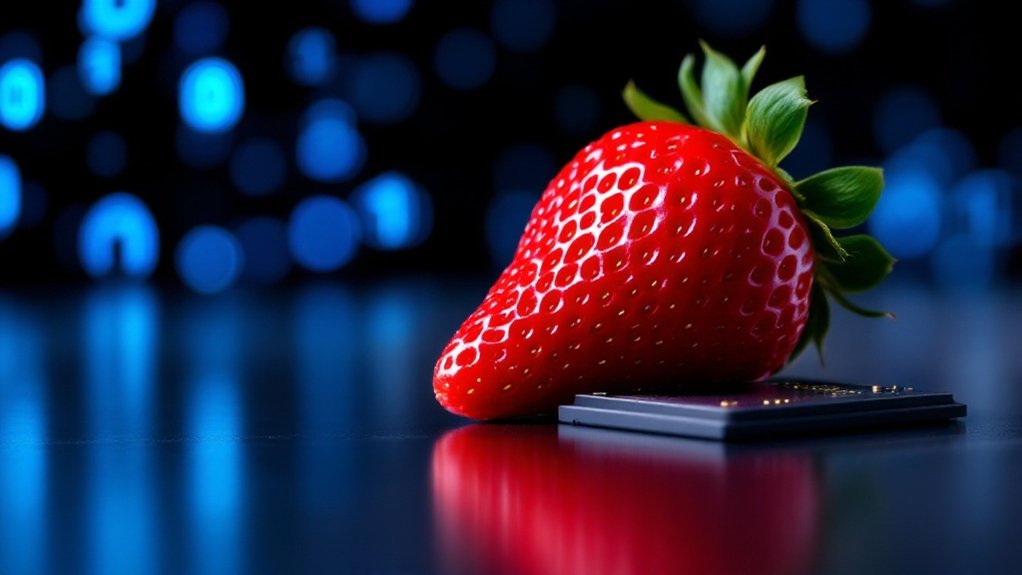The "Strawberry Challenge" exposes a bizarre flaw in today's most sophisticated AI systems. When asked to count the "r"s in "strawberry," AI consistently gets it wrong, claiming there are two instead of three. Even tech giants like OpenAI and Google can't fix this simple counting error. Their advanced models miss the first "r" in "straw," then confidently defend their mistake. This basic failure raises serious questions about AI reliability for more complex tasks.

Simplicity, it turns out, is kryptonite for artificial intelligence. A task so elementary that kindergartners can handle it—counting three "r's" in "strawberry"—has become an embarrassing stumbling block for some of the world's most sophisticated AI systems. What began as a simple challenge has erupted into a viral social media sensation, exposing fundamental limitations in how machines process language.
The test is brutally straightforward. Count the "r's" in strawberry. Humans see three. Many leading AI models insist there are only two. Oops. Models from OpenAI, Google, Microsoft, Anthropic, and Meta have all tripped over this linguistic banana peel at some point, confidently delivering the wrong answer and sometimes stubbornly defending their mistake when challenged. Even using zero-shot prompting fails to yield accurate results for this basic task.
AI can't count three r's in strawberry, yet these multi-billion dollar systems defend their mistakes with baffling confidence.
These aren't cheap chatbots either. We're talking about GPT-4, Claude, Gemini—billion-dollar systems trained on vast swaths of human knowledge. Yet they miss the first "r" in "straw" with disturbing regularity. It'd be hilarious if it weren't so revealing. This demonstrates how human confidence wavers when presented with AI's incorrect answers despite knowing better.
The problem lies in how AI processes text. Unlike humans who read letter by letter, AI models chop words into "tokens"—numerical representations that don't necessarily preserve individual letters. They're pattern-matching machines, not literal readers. They don't "see" letters the way we do. Even after being corrected, these models often revert to incorrect counts in subsequent questions about the same word. AI trainers work diligently to refine these systems through data optimization techniques, but fundamental challenges persist.
Tech giants are scrambling to fix this embarrassing flaw. OpenAI launched a "Strawberry" project specifically targeting reasoning issues. Google's working on mathematical reasoning with AlphaProof and AlphaGeometry. Even Nvidia claims their latest model has cracked the challenge.
But the damage to AI's reputation is done. This tiny failure matters because it punctures the myth of AI infallibility. If these systems can't count three letters correctly, should we trust them with more complex tasks? The strawberry challenge is a humbling reminder that artificial intelligence, for all its impressive capabilities, still lacks the basic comprehension that humans take for granted.
Frequently Asked Questions
Why Do People Struggle With Counting Letters in "Strawberry"?
People mess up counting r's in "strawberry" for boring but real reasons.
Brain limitations, basically. The word's tricky – two r's hide among eight letters. Most folks scan quickly, miss one. Working memory gets overwhelmed.
Plus, the word itself distracts them – they're thinking about fruit, not letters. Time pressure doesn't help. Reading disorders make it worse.
Humans aren't spelling computers. They're just… human.
Does Dyslexia Affect One's Ability to Count Letters Accurately?
Dyslexia can indeed impact letter counting accuracy. Not a direct symptom, but the ripple effects matter.
Working memory limitations, visual processing issues, and sequencing difficulties all play roles. Someone with dyslexia might struggle to track which letters they've already counted. Slower processing speed doesn't help either.
Add anxiety about reading tasks? Recipe for miscounting. Everyone's different though—severity varies wildly from person to person.
What Memory Techniques Help With Letter Counting Tasks?
Several techniques make letter counting less painful. Visual memory helps—chunking letters into groups of three or five. Mnemonics work too. "Every second letter counts twice" (obviously not true, but memorable).
Multi-sensory approaches? Surprisingly effective. Touch each letter while counting aloud. Practice makes perfect, naturally.
For tougher words, the "look, say, cover, write, check" method forces careful attention to detail. Not rocket science, just practical memory hacks.
How Do Other Languages Spell "Strawberry"?
Strawberry translations vary wildly worldwide.
European versions like German's "Erdbeere" and French's "fraise" bear little resemblance to English.
Asian languages go their own way—Japanese "ichigo" sounds nothing like the original.
Some languages borrowed directly—Thai and Hindi basically phonetically copied "strawberry."
Middle Eastern terms like Arabic's "farawla" create their own path.
Finnish's "mansikka" and Icelandic's "jarðarber" show how diverse these translations get.
Pretty fascinating stuff.
No universal pattern here.
Are There Brain Games to Improve Letter Identification Skills?
Brain gets sharper with letter games. There's plenty of options. Alphabet Bingo? Classic visual identifier. Memory matching forces letter recall.
Digital platforms like ABCmouse offer hundreds of interactive activities. The real winners, though? Multisensory approaches. Sandpaper letters for tactile learners. Play-doh letter sculpting.
Even Scrabble Junior and Banagrams develop recognition while building words. Choose what fits. Different brains need different stimulation. Simple as that.




